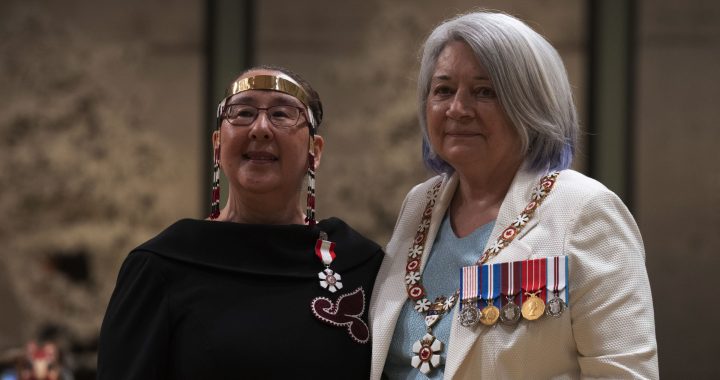Lucy ScholeyAPTN NewsSarah Nowyakallak thought a search party was looking for her big sister who went missing in Montreal.Back home in Inukjuak, a fly-in Nunavik community that sits on the Hudson Bay, she said hunters and community members would set out to find missing people. But in the big city, it appeared there was little effort to find out what happened to Alacie Nowyakallak.The 34-year-old disappeared in early October 1994. Her body was found in the St. Lawrence River almost a month later. The family says it has yet to see a police report on Alacie’s death.“Every time I come to Montreal, I think of her,” Sarah said during the National Inquiry into Missing and Murdered Indigenous Women and Girls on Wednesday.The third day of the hearings in Montreal focused on the stories of Inuit women from Nunavik in northern Quebec. According to the 2016 census, 7.6 per cent of Indigenous people in the Francophone province identify as Inuit.Though Sarah and Alacie were biologically cousins, Sarah was adopted into the Nowyakallak family when she was young. She described how she grew up with her seven cousins, who she considers siblings.“I was not raised with people drinking or doing drugs of any sort,” she said, adding how her father was a hunter, carver and fisher who provided for the family, while her mother was a seamstress and housekeeper.“I loved my childhood.”Alacie started spending more time in Montreal. When her mother went to visit, Alacie did not show up. The family reported her missing, but Sarah testified how they didn’t hear news until police found Alacie’s body.“We didn’t know what number to call to try to find out,” she said.Olivier Gianolla, a long-time family friend from Montreal’s Notre-Dame-de-Grâce neighbourhood, started investigating. He went to areas he knew Alacie frequented and contacted her boyfriend and police.By the time Alacie’s body was pulled from the St. Lawrence River, she could only be identified by the necklaces she was wearing.“They could not recognize her because her body was in the water so long,” said Sarah.The family received a coroner’s report, which they said was vague and contained limited information.After the inquiry, Lizzie Calvin said her cousin Alacie loved children and wanted a family of her own.But when Alacie needed her appendix removed, the medical team removed her ovaries as well.Calvin said the family wants to find peace – but they need answers.“It’s always there. You don’t forget.”The inquiry also heard testimonies of domestic violence and a northern culture that encourages women to stay in the marriage.Rebecca Jones, a survivor of domestic abuse who has lived in Coral Harbour, Nunavut, said the prevalence of sexual violence up north forced her to leave.“I didn’t want my children to grow up thinking that that’s normal,” said Jones, who’s now a coordinator for the violence prevention program at the Ottawa Inuit Children’s Centre (OICC).Yet she’s faced racism living in southern Canada, she said, noting that she often has to explain her background and the difference between Inuit, Metis and First Nations.“It’s that lack of education, the assumption that we’re all drunks,” she said.Echoing the testimony of other women that day, Jones said more education, northern resources and Inuit-specific services are needed, including healing circles.Through the OICC, Jones has helped develop a toolkit for women that includes resources Inuit women can seek out and emergency numbers. It will be printed out and distributed in Ottawa and in northern communities.lscholey.ca










